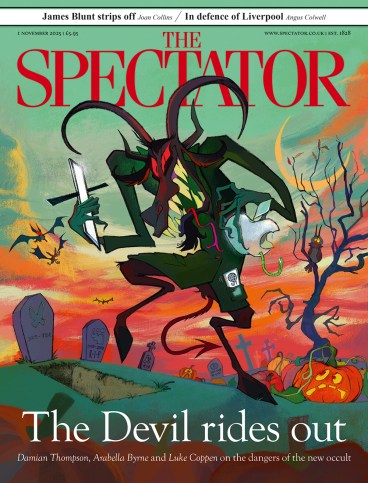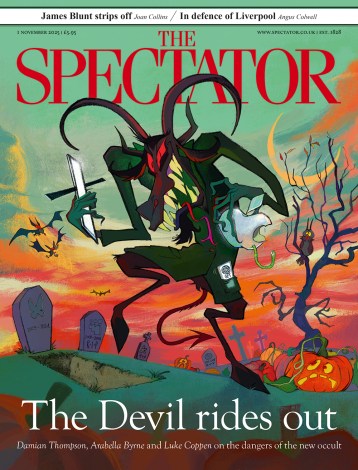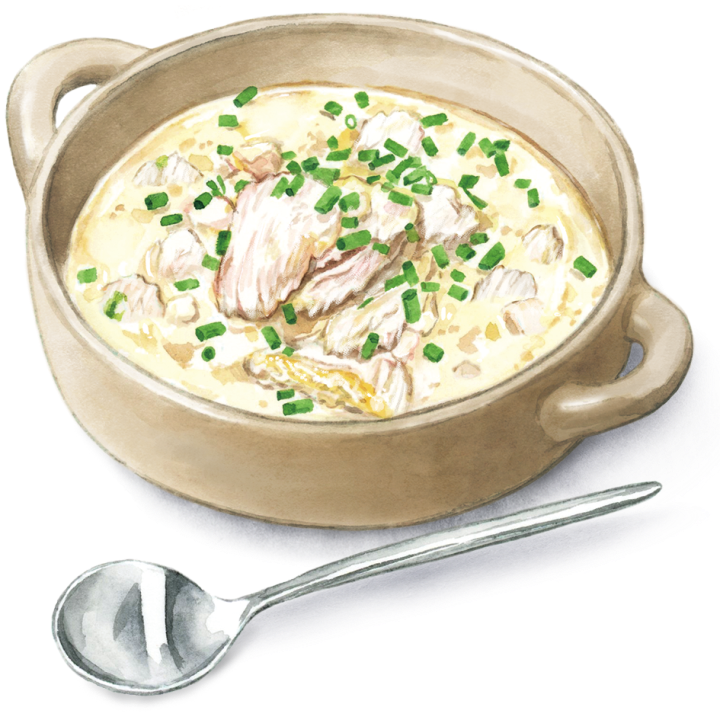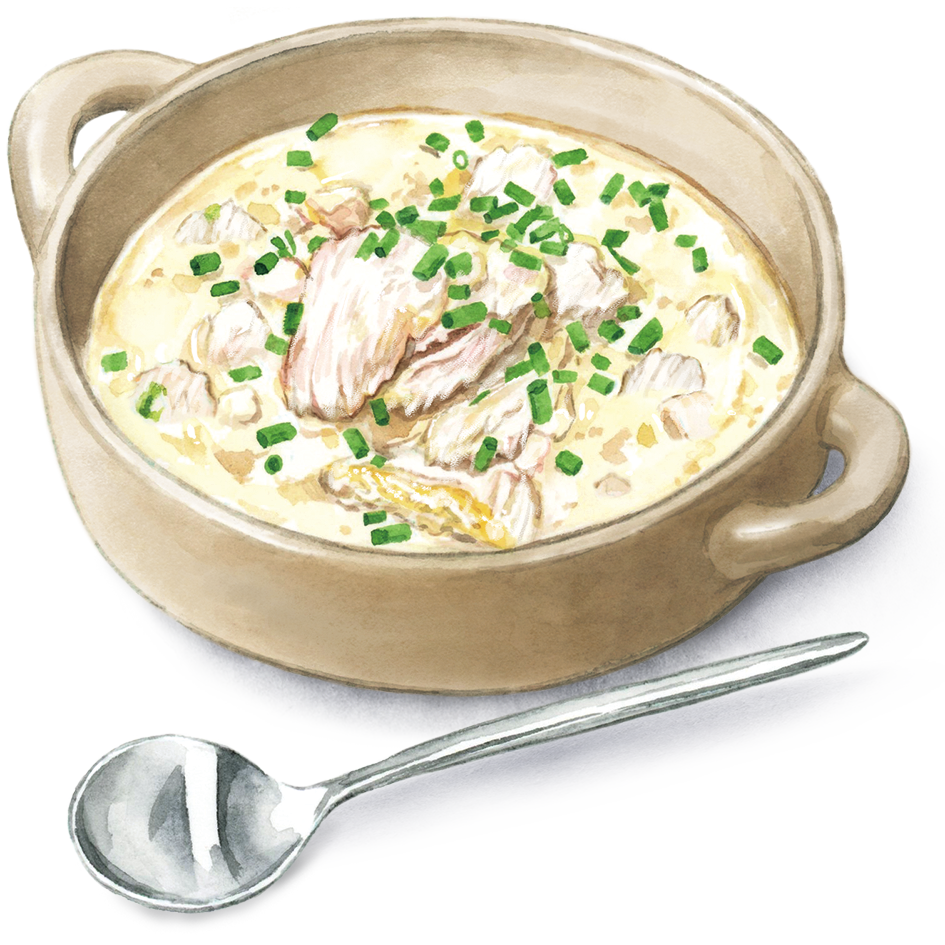
They say not to judge a book by its cover – but what about judging a recipe by its name? Some sound like a disease or worse. Spotted dick, toad in the hole, lady’s fingers, Dutch baby, I’m looking at all of you.
Cullen skink is one that has been accused of having an off-putting name. But in its defence, Cullen skink is descriptive. There’s a suggestion that the word ‘skink’ comes from an Old German word for ‘beer’ or ‘essence’, but given that Cullen skink is a creamy, thick soup, with no beer constituent and no obvious German connection, this seems an unlikely origin. More plausible is the explanation the Oxford Companion to Food plumps for, that ‘skink’ is a Scots word for ‘shin’ or ‘knuckle’, which became a shorthand term for a soup made from those beef cuts.
But in Cullen, a fishing village in Morayshire on the north-east coast of Scotland, in the late 19th century, beef was in short supply. Haddock, however, was plentiful. What was once a beef soup became a smoked fish soup, and Cullen skink was born. The smoked haddock, as well as being local and abundant, gives the soup – which, with its creamy base and hearty texture, is essentially a chowder – a distinctive and complex depth. It’s easy to see why it quickly became a beloved and integral part of Scottish culinary heritage.
In fact, it is such an important part of the landscape that today there is an annual ‘Cullen Skink World Championship’. In 1999, BBC2’s Food and Drink programme visited the area and organised a Cullen skink-making competition between five local housewives. Mrs Mary Addison’s skink was found to be the most delectable and she was duly crowned the Queen of Cullen Skink.
A few years on, this competition was formalised, with the inaugural world championship taking place in the town in 2012. Each championship sees a handful of competitors engage in a 45-minute cook-off to produce the best traditional Cullen skink and the best Cullen skink ‘with a twist’. Recent twists have included deep-fried capers, haggis bonbons, wild garlic pesto and dry vermouth.
For a classic Cullen skink, however, there are limited variations: some poach their fish in stock or water, others in milk; some believe leeks are an essential addition, others eschew them; some blitz the soup to silken smoothness, others prefer chunks. But the bones of the dish remain the same: smoked haddock, potatoes and onions, softened into a thick soup, enriched with milk or cream. A truly authentic Cullen skink uses finnan haddie, which are haddock cold-smoked with green wood or peat, but any good smoked – and ideally undyed – haddock will do the job.
For my Cullen skink, I poach the haddock in milk (with a bit of perky bay to bring aroma), and then use that milk as the base for the soup. The veg – onions, leeks and potatoes – are sauteed in lots of butter until soft. Then that base is combined with half of the cooked haddock, and blitzed with an immersion blender until silky smooth. The remaining fish is flaked and piled high in the middle of the bowl. A final dribble of cream and a scattering of bright green chives finishes the soup off.
It is, if I do say so myself, an excellent rendition of the classic soup. And so, as I ladle out my Cullen skink, the heady aroma of smoked fish and alliums filling the kitchen, I briefly toy with the idea of entering the competition, picture myself holding up a soup bowl in triumph. Is the crowning literal, I wonder? A garland of bay leaves? Or ornamental haddock flakes? But then I remember that I live really quite far away from Cullen, that I am a skink hobbyist at best, and that a competitive spirit only gets you so far. And that, after all, the soup is its own reward: smoky and creamy, rich and punchy – possibly the most amount of comfort that could exist in a single bowl.
Serves: 4
Hands-on time: 10 minutes
Cooking time: 20 minutes
- 500g smoked haddock
- 600ml whole milk
- 1 bay leaf
- 50g butter
- 2 large floury potatoes
- 1 onion
- 1 leek
- 1 tbsp chives, finely chopped
- 4 tbsp single cream
- Put the milk, bay leaf and haddock into a large, heavy-bottomed pan, and bring slowly to a simmer, then cook for five minutes. Using a fish slice or slotted spoon, carefully remove the haddock and set it to one side. Discard the bay leaf.
- Peel and roughly chop the onion and potatoes, and slice and wash the leek. Melt the butter in a frying pan, then add the onion and leek, cover and cook over a low heat until soft but not coloured, about ten minutes. Add the potato, stirring to coat it in the butter, and then add the lot to the milk.
- Simmer the veg in the milk for about 10-15 minutes, until the potato is tender and will squish beneath a spoon. Remove the pan from the heat.
- Flake the cooked haddock, and return half of it to the pan. Using an immersion blender (or ladling batches into a food processor), blitz the soup until it is smooth and thick. Season to taste, bearing in mind that the smoked fish will have imparted some saltiness.
- Spoon the soup into bowls and add a swirl of cream. Divide the remaining flaked haddock between the bowls, piling it in the centre, and then top with a sprinkle of chopped chives.








Comments